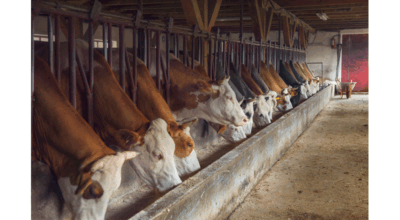Baling picker, scale improve harvest efficiency
Published 10:02 am Wednesday, December 18, 2013

Davis and Sons Inc., harvested cotton from eight row plots, and used the baling picker to wrap up the cotton into small round bales. — SUBMITTED | CHRIS DRAKE
SEBRELL—When there’s a way to increase efficiency and productivity, what farmer is going to turn down that opportunity?
During the most recent harvest season, for example, Davis and Sons Inc. in Sebrell used a baling picker to collect cotton from eight row plots, as well as the rest of their crop. The machine also wrapped up the cotton into small round bales or “rolls,” as they’re also called.
As each bale was dropped out, a tractor moved the roll to a portable scale, which was weighed by Chris Drake, extension agent for Southampton County.
“This gave us a very accurate weight of each plot,” said Drake.
He went on to explain that a sample of cotton from each roll was taken to the Tidewater Research Station in Suffolk for ginning. This determined the actual percent of lint that each variety would produce.
“After you get that number, you can determine the pounds of lint cotton produced on each plot and divide that by the acreage of each plot to determine yield per acre,” Drake said.
In the past, he continued, standard basket pickers and boll wagons with built-in scales measured most plots, “which is a perfectly fine way to do it.”
“In this case we were using a newer method of harvesting/recording cotton plots that seemed to be faster and more efficient than in years past,” said Drake.
The top five varieties when reported as a percentage of the adjacent “check” variety were in descending order: Phytogen 339; Nexgen 1511; Stoneville 4946; Phytogen 499; and Deltapine 1321.
As previously mentioned, Davis and Sons (Ray Jr. and Jeff), used the baling picker for their entire farm, not just test plots.
Jeff Davis said this year is the first his family is using the machine. They bought a 2012 model from someone in Tennessee. John Deere released the machines in 2010, said Drake.
“My brother (Jeff) picked the entire crop with that one machine,” said Ray Davis Jr. “With the other kinds, we need three machines and as many as seven men.
“Basically, it does it all. We do have to move bales around, though.”
He continued to say that the work would begin as early in the day as possible, and continued to dusk. The machine harvested “as much with a new six-row picker and two four-row basket pickers.”
Ray Davis figured the baling picker gave them a two and one-half to three-fold efficiency.
“This year, we finished before Thanksgiving,” he added to further illustrate his point.
With the exception of having to periodically stop and rethread the wrap for the rolls or “rounds,” as Ray Davis would call them, the machine kept moving. “It doesn’t sit still.”
“It’s revolutionized the cotton industry,” he said, and added, “It’s expensive.
“The cost of the baling picker, if purchased new, is around $600,000.” Drake mentioned. “That’s right, not a typo, over half a million dollars.”
Ray Davis said that every wrap you see is an additional $33.
“The machine wraps it the same way every time,” he added. “I hope to get many years out of it.”
The Davis family is not the only one in Southampton County that uses the relatively new baling picker. Drake figures there are about eight or nine such machines being used locally.
As for the scale, that was made by a company called Western Forage systems out of Idaho, and was bought in early 2012 for $16,500 by the Virginia Cooperative Extension for use in the southeast district. The scale was delivered that May, and was used in the 2012 and 2013 harvest seasons for a variety of crops.
Drake went on to explain that the trailer transforms from a towable platform into a flat surface with ramps that contains four load cells attached to a digital monitor to record weights up to 60,000 pounds.
It has been used to weigh cotton boll buggys, peanut trailers, wheat trials using dump trucks and, in this case, the round bales from the cotton plot.
“This was the first time ever in this state one was used in conjunction with a baling picker for cotton test plot harvest,” he said.
“The scale is designed to be a portable, versatile, accurate means of weighing nearly any commodity for purposes of trial work or field work,” continued Drake.
“We even used it at 2012 fair to weigh the giant pumpkin that was entered because it was too big to fit on regular scale.”





